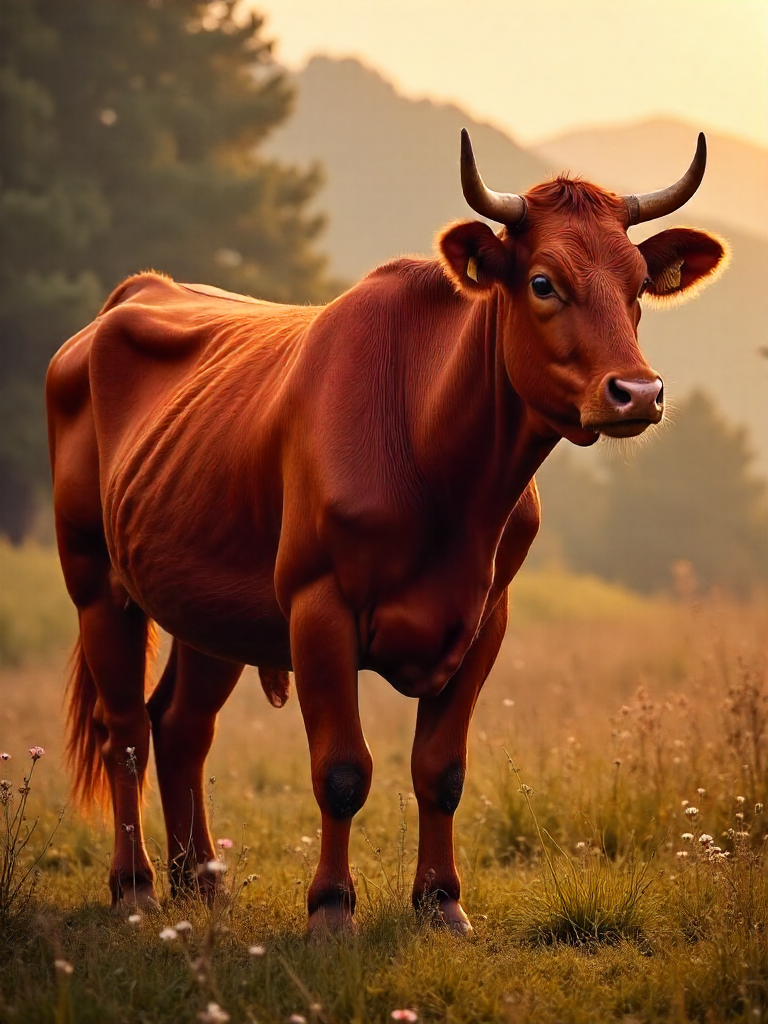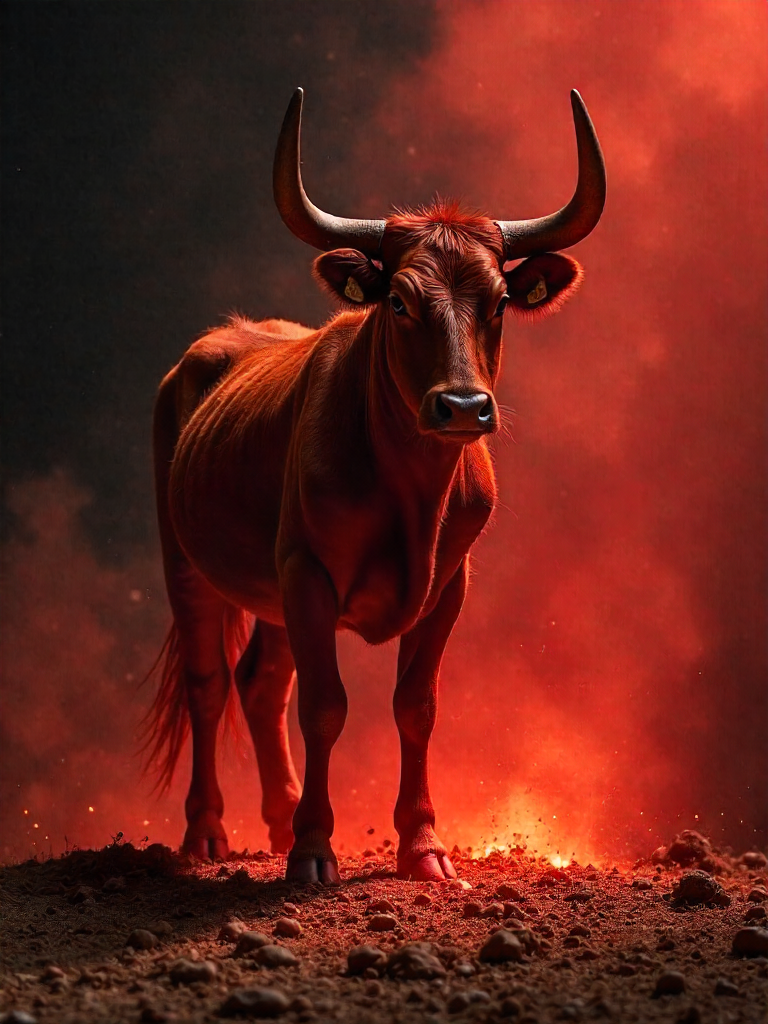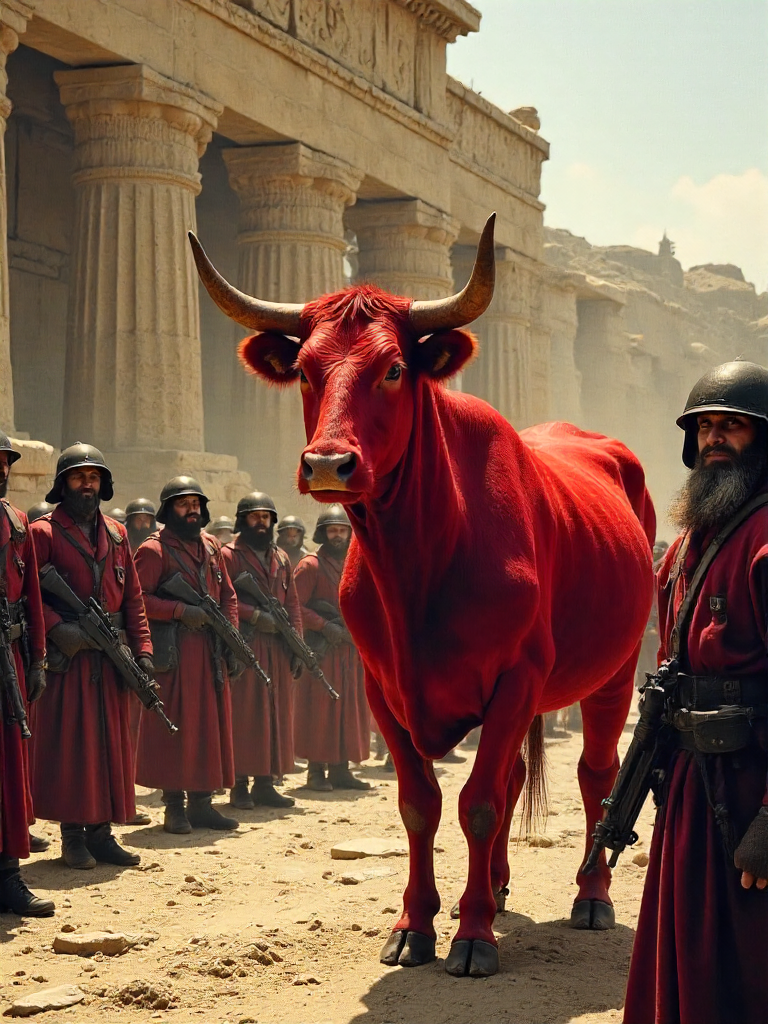In the realm of biblical prophecy and the anticipated “end of days,” the red heifer stands as a symbol of profound theological and eschatological significance. This rare occurrence is more than a natural phenomenon; it carries deep theological and eschatological implications, shaping beliefs about purification and the Messiah’s return.

This article examines the remarkable story of the first red heifer born in 2,000 years, tracing its historical context, the prophecies it fulfills, and the growing anticipation among believers about the approaching end times. In 1989, Clyde Lott, a Mississippi-based cattle breeder and Pentecostal preacher, initiated a unique biblical endeavor after encountering Numbers 19. This passage describes a “red heifer without spot,” a cryptic instruction that had baffled scholars for centuries. Despite the Old Testament often depicting cattle as speckled or brown, Lott was captivated by the unusual genetic trait. The red heifer, as scripture states, was vital for Israelites’ purification and worship rituals, making its emergence historically and spiritually significant.
The anticipation of apocalyptic events is a central theme in both Christianity and Judaism, intensifying as humanity approaches major millennial milestones. For fundamentalists, current events in the Middle East are seen as fulfilling ancient prophecies from figures like Jeremiah, Ezekiel, Isaiah, and John. These prophecies outline three pivotal events preceding the Messiah’s return: the restoration of Israel, Jewish control of Jerusalem, and the rebuilding of the Temple, which the Romans destroyed in 70 A.D. Notably, two of these have already occurred.

Reflecting on the red heifer’s role, Lott concluded that this seemingly obscure requirement was pivotal to the Messiah’s return. Jewish teachings emphasize that the ashes of a pure, unblemished red heifer are essential for purifying participants in future Temple rituals. However, locating such a heifer in Israel had remained a challenge for nearly two millennia.

This changed in August 1996 when a red calf named Melody was born in Israel. The event sparked global religious excitement, with many viewing it as a key step toward constructing the Third Temple. Believers from both Judaism and Christianity flocked to Kfar Hasidim, where Melody was kept under armed protection, eager to witness the prophecy’s fulfillment.

Despite the initial enthusiasm, some experts expressed caution. A Ha’aretz columnist likened Melody’s potential impact to a terrorist threat, suggesting immediate destruction to prevent misinterpretation. Even Rabbi Shore, who initially approved her, warned that the Temple’s rebuilding had not yet been confirmed.

Though Melody did not fully satisfy all requirements, the search for a qualified red heifer persisted. In December 1997, Lott partnered with Rabbi Chaim Richman to breed red cattle in the West Bank, aiming to produce a heifer meeting all Halakic standards. Lott even proposed shipping embryos to Israel to ensure quality breeding.
The red heifer remains a powerful symbol in biblical prophecy, fueling fervent expectations among believers. From Lott’s discovery to Melody’s birth and the ongoing search, this narrative embodies deep faith and the anticipation of the long-awaited “end of days” and the Messiah’s return.